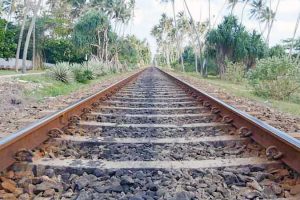ROW issues cause a major hurdle in the NSCR completion – PNR
Issues with right of way (ROW) are one of the difficulties in the construction of the North-South Commuter Railway, according to the Philippine National Railway (PNR) Chairman Michael Ted R. Macapagal. “The challenge of course is right of way issues. That’s a major hurdle, I have to admit,” Mr. Macapagal said on July 31 in […]

Issues with right of way (ROW) are one of the difficulties in the construction of the North-South Commuter Railway, according to the Philippine National Railway (PNR) Chairman Michael Ted R. Macapagal.
“The challenge of course is right of way issues. That’s a major hurdle, I have to admit,” Mr. Macapagal said on July 31 in an interview.
He added that it is vital to inform the people about the project’s role in decongesting and reducing the travel time to Metro Manila by 50%.
“We need to inform them of the different benefits that will be available to the people once this project is completed.”
Further, striking a ‘delicate balance’ will help overcome the difficulty, Mr. Macapagal said.
“We, the government have to be decisive, but… we have to show empathy. We have to explain to the people why we’re doing what we’re doing.”
He added that the government has extended financial help to informal and formal settlers affected by the construction.
To expedite addressing the ROW problems, President Ferdinand R. Marcos Jr. inked Administrative Order (AO) 19, which created an inter-agency task force to handle the ROW activities in railway projects like NSCR on March 25.
As stated in the AO 19, the committee assigned will “study and devise an efficient and collaborative mechanism to streamline the process of land acquisition necessary for the implementation of all railway projects.”
The Tutuban to Malolos station has 43.49% construction progress, while Malolos to Clark has 33.06%. Manila to Calamba has also begun its construction with 7.20% progress, according to the Department of Transportation (DOTr) on Monday.
The department targets complete operations by 2030, with partial operations in 2027.
The railway project aims to transport 800,000 passengers daily once fully operational. – Almira Louise S. Martinez












